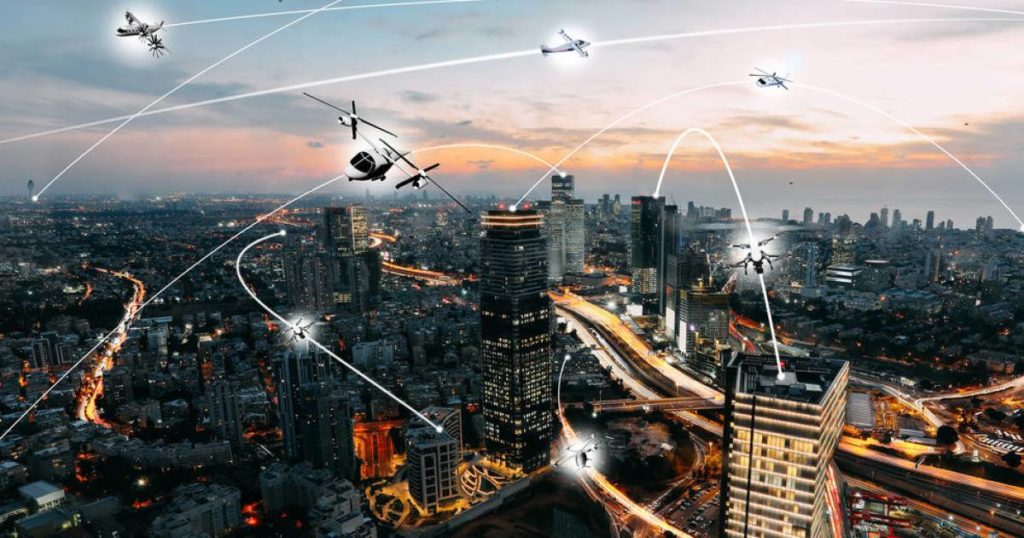NASA has given UC San Diego $5.8 million to help develop electric-powered flying taxis, a form of ride sharing that has been envisioned for decades but is struggling to get beyond the concept stage.
UCSD will lead a group of five universities and companies in creating software tools to design small fleets of vertical takeoff and landing, or eVTOL, aircraft that are quieter, safer, cleaner and more efficient and affordable than helicopters.
Customers would go to conveniently located taxi stands where they could hail a ride with a smartphone app and join other passengers in being quickly taken significant distances in areas where ground traffic is often congested.
Some taxis might be pilotless, flying automated, preset routes.
The concept — also known as urban air mobility, or UAM — is largely meant for sprawling areas like Los Angeles, which has some of the nation’s worst traffic. Air taxis also could shuttle riders among places such as San Diego International Airport and outlying cities such as Oceanside and Escondido.
A “90-minute ground commute to a downtown workplace could be reduced to a 15-minute air taxi flight,” John Hwang, a UCSD mechanical and aerospace engineer, said in a statement.
Hwang is leading the research team, which includes UCSD engineer Shirley Meng, one of the nation’s foremost battery experts, as well as collaborators from San Diego State University, UC Davis, Brigham Young University, Aurora Flight Sciences and M4 Engineering.
Newsletter
Get the La Jolla Light weekly in your inbox
News, features and sports about La Jolla, every Thursday.
You may occasionally receive promotional content from the La Jolla Light.
Interest in UAM has waxed and waned over the years. It’s been on the upswing lately; United Airlines has announced it will buy 200 eVTOL aircraft from Archer in a deal that could be worth up to $1 billion. Toyota and Airbus also are investing in the field.
Ken Moelis, chief executive of investment bank Moelis & Co., told CNBC that creating eVTOLs involves essentially refining what has already be done with helicopters. People are “adding the word ‘electric’ to it … The technology exists. There’s nothing to invent.”
But UCSD’s new NASA grant expresses a different outlook, saying engineers are going to have to do everything from improve eVTOL battery technology to make the taxis quieter than helicopters and ensure they won’t have catastrophic problems while flying over urban areas. ◆
